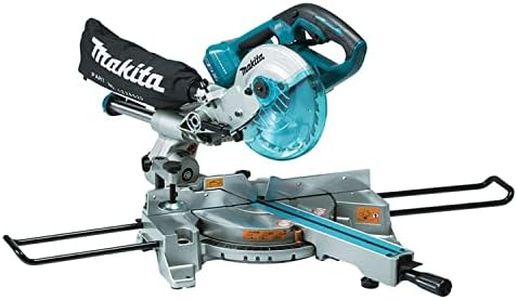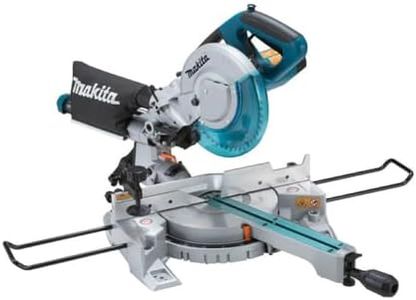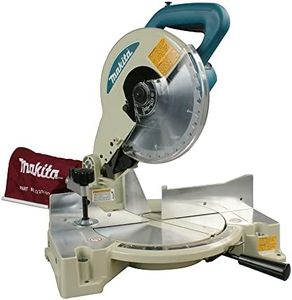We Use CookiesWe use cookies to enhance the security, performance,
functionality and for analytical and promotional activities. By continuing to browse this site you
are agreeing to our privacy policy
4 Best Makita Miter Saws
From leading brands and best sellers available on the web.Buying Guide for the Best Makita Miter Saws
Choosing the right miter saw can make woodworking, construction, or home projects much easier and more precise. When shopping for a miter saw, there are several important features to consider. The right option will depend on what types of cuts you’ll be making, how portable you need the tool to be, the size of material you plan to cut, and your experience level. Understanding each key specification will help you match a saw to your exact needs and make your projects smoother and more enjoyable.Blade SizeBlade size is one of the most important specs for a miter saw and it refers to the diameter of the saw blade the tool uses, usually measured in inches. Common sizes are 7-1/4, 8-1/2, 10, and 12 inches. This spec matters because it determines how thick and wide the material you can cut will be. Smaller blades are lighter and more portable, good for trim work and smaller projects, while larger blades handle wider, thicker materials like lumber or wide boards. Choose a blade size based on the size and type of materials you’ll cut most often.
Type: Standard, Compound, Sliding, Dual-BevelThe type of miter saw affects how versatile and flexible the tool is. A standard miter saw cuts straight and miter angles (left and right), a compound miter saw tilts for bevel (angled) cuts, a sliding miter saw allows the blade to move forward and backward which increases cutting width, and a dual-bevel saw tilts both left and right for complex cuts. Standard models are simpler and lighter, great for cross-cuts and trim. Compound types are perfect if you cut angles for frames or molding. If you regularly cut wider boards or need versatile angles, a sliding dual-bevel saw is most convenient. Think about your typical projects and pick the type that matches the work you need to do.
Cutting CapacityCutting capacity refers to the maximum width and thickness the saw can cut in a single pass. This is usually affected by both the blade size and sliding feature. If you work with narrow trim or boards, almost any saw can handle your needs. But if you often need to cut baseboards, larger moldings, or wide lumber, look for models with higher cutting capacity, especially sliding models. Evaluate the common sizes of wood you use to guide your decision.
Motor PowerMotor power determines how easily and smoothly the saw can cut through different materials, usually measured in amps or watts. Higher-powered motors can handle tougher or harder woods and make clean cuts with less effort. Lower-powered motors are lighter and quieter, suitable for light-duty or occasional tasks. If you plan to use the saw frequently or cut through hardwoods or larger pieces, prioritize higher motor power. For lighter home projects, a smaller motor is often enough.
PortabilityPortability is about how easy it is to move and store the saw. Some saws are compact and lightweight, ideal for people who need to carry them between job sites or move them around the home. Others are heavier because they offer more features, larger blades, or greater cutting capacity. If you know you’ll need to be moving the saw often, or if storage space is tight, look for lightweight and compact builds. If your saw will stay in a workshop, weight and size may matter less.
Dust CollectionDust collection refers to whether the saw has a system to gather sawdust as you cut. Good dust collection keeps your workspace cleaner and protects your lungs from sawdust. Some saws have simple bags, others connect to vacuums, and some are more basic. If you work indoors or care about cleanup, prioritize effective dust collection. If you mostly work outside or are not concerned about dust, this may be less critical.
Ease of AdjustmentsEase of adjustments describes how simple it is to change the miter and bevel angles, adjust the fence, or lock in different positions. Saws with easy-to-read scales and quick-lock systems save time and reduce frustration during repeated angle changes. If your work requires frequent adjustment for different cuts, this spec makes a big difference in your workflow and accuracy.
Safety FeaturesSafety features might include blade guards, electric brakes, large handles, and trigger locks. These features help prevent accidents and make the tool safer for beginners and experienced users alike. If you are newer to power tools or will use the saw in a busy environment, prioritize these safety additions for peace of mind.



